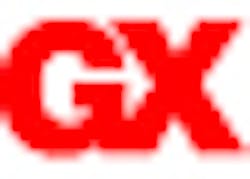New York Concrete was hired by Skanska USA for 45,000 yards of bulk rock excavation on the future site of the City University of New York’s Advanced Science Research Center. When complete, the center will occupy 400,000 square feet between two buildings that share a common basement.
The complex is a $550 million project with an additional $50 million of infrastructure development in the area. The glass-curtained building will be a shining jewel in the heart of Harlem.
Frank Forte, Skanska’s project superintendent, has been on the site from the beginning. Drilling and blasting was Forte’s recommended method for excavation from the start of the project. He was onsite when the first test hole was drilled. “Originally, every expert agreed blasting would be the only way to break through the rock. We tried a smaller hammer in the testing phase, and it barely rattled the Manhattan schist and granite,” says Forte. “But then, fortunately, we found something extra-powerful to handle the project.”
At the first meeting with potential bidders on this excavation project, Forte laid it out to everyone. John Russo, New York Concrete’s head of operations, recalled Forte’s advice to potential bidders, “From the beginning Frank wanted to make it very clear to everyone bidding on the job that excavation on this site would be challenging.”
Bobby Keane, New York Concrete’s site supervisor, said they covered their bases. To investigate the hammer option, operator John Triplett and Russo traveled to Texas to observe a demonstration of the newly introduced HB 10000 model hammer from Atlas Copco. After Russo saw it in operation he knew it could be used for the Skanska job. He then worked with his local dealer, Hoffman Equipment Co.
No Room for Error
After spending his career building high rises in New York, Frank Forte knows about working next to neighbors. “If you’re going to build in New York City, it’s important to always be mindful of the fact that people may live very close to where you’re working,” says Forte.
Looking at this job, it first appeared perfect for blasting-an uncommon opportunity in the populated city of New York-with open space and a controlled area with no buildings within a hundred yards. But just on the edge of that perimeter is a neighboring science building with a nuclear imaging system doing electromagnetic testing with equipment that didn’t have specifications as to what vibration it could handle. So, the tolerance spec for New York Concrete was no vibration.
To accommodate its neighbor, the excavated area had a 300-foot vibration-free zone around it. Seismic equipment was set up to monitor the construction progress. “Skanska is working very closely with the local community and client to make sure that everyone is happy with the way the project has proceeded,” says Forte.
Impact Energy
The Atlas Copco HB 10000 hammer hits with 12,000 foot-pounds of energy per strike, 400 times a minute. Forte said, “It hits like a freight train. It’s borderline unbelievable what that hammer can do.”
Currently, the crew is two months into the four-month excavation phase of the project. “We are right on schedule with the excavation,” says Keane. “The excavation is moving along smoothly.”
When John Russo estimated the job, he thought it might take three breakers to do it, but for much of the project two was all that was needed to keep up with the mucking excavator and articulated haul truck. “The bulk of the work is being done with the HB10000 on a Komatsu PC800 excavator. We have one Komatsu PC600 excavator running a Rammer and a Tramac as backup,” says Russo.
The high productivity is the result of the HB10000 and the skills of the operator. Excavator operator John Triplett has 26 years experience of operating equipment in New York City. He is also a certified crane operator. He says that the HB10000 is nothing less than amazing: “I have run every hammer there is, and this thing is really something-it’s amazing. Plus, it allows me to trim within an inch.”
Triplett says, “I am impressed with the performance of the hammer and shocked over the bit life.” New York Concrete is using the Silver Line bits provided by Atlas Copco. The company has two bits: The second is on now; the first was removed for sharpening.
“The rock is 40 to 60 ton and up to 80 in some spots,” Triplett says. “I was in 80 all last week and that’s nasty stuff. I thought with a hammer that hits as hard as the HB 10000 we could go through one [bit] a day, but I got six weeks on the first point and at least 15,000 yards.”
When looking at production levels, Triplett says the HB 10000 will outperform the two other hammers on the job. “This hammer will do double what our biggest hammer will do,” says Triplett. On Triplett’s best days, he said he has hammered 1,500 and 2,000 yards.
Another challenge on a job like this, Russo says, is how to remove the rock. The area was core drilled to test the hardness, but that isn’t the critical factor in moving the rock.
“Our operators are the best I know,” says Keane. The skill comes with knowing how to find the natural flow in the rock to break it in the right place. It’s like cutting with the grain on a steak; you need to work with the rock, not against it.
Keane says, “The formation is layered in a north-south direction and breaking it requires using the natural seams found in the formation, chopping the next rock into the relief of the previous cut.”
“This remarkable hammer exceeded our expectations, and now the project is ahead of schedule,” says Forte. “Skanska, our client and its neighbors are happy that work is proceeding according to plans.”



